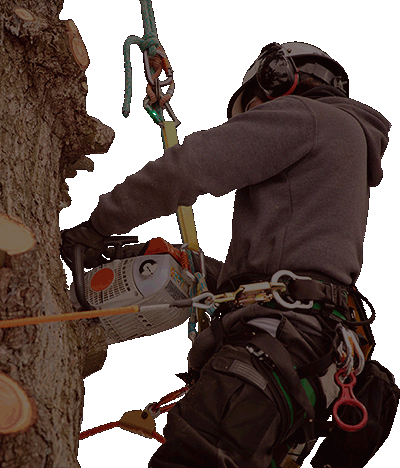
It’s time to mulch again!
But, with the time and money it takes to mulch your Spartanburg trees and beds regularly, you’re likely wondering, “Is it worth it?”
The short answer to whether you need to apply mulch is a resounding yes!
Read on to find out five ways science proves how important mulch is.
Five Reasons Science Shows You Absolutely Should Mulch Around Trees
Kansas State University says applying mulch is the single best thing you can do for a Spartanburg tree after you plant it. And we agree. Here’s why.
1. Mulch can (nearly) double how fast Spartanburg trees grow.
- Adding mulch can nearly double the Spartanburg tree growth rate – compared to when Spartanburg trees grow in grass.
- Mulch increases the growth rate of walnut Spartanburg trees by 89 percent. Other fine hardwood Spartanburg trees – like oak, maple, hickory, birch, beech and cherry Spartanburg trees – grow 79 percent more with mulch!
- United States Forest Service 2016
2. Mulch significantly reduces weeds–by up to 45 to 85 percent.
- Mulch prevents many weed seeds from germinating by lessening the amount of light they get.
- Thicker, coarser organic mulch, rather than a finer mulch like compost, does a better job reducing weed growth.
- One study found that mulch can reduce weed growth by 45 percent the first year and 85 percent the second year!
- HortTechnology 2007; HortTechnology 2016
3. Mulch gives the soil (and your tree!) added nutrients.
- Mulch helps your tree's soil accumulate more nutrients, like nitrogen, phosphorus and potassium.
- The more inches of mulch you add, the more nutrients your soil gets. But, too much mulch can actually damage plants. That’s why 2 to 3 inches of mulch is best.
- University of California 2009
4. Mulch can reduce water evaporation by 35 percent and soil erosion by up to 86 percent.
- Organic mulch can reduce water evaporation by about 35 percent–compared to bare soil. If you apply the right amount of mulch, you can significantly reduce how often and how much you water.
- Plus, adding a layer of organic mulch can reduce soil erosion by up to 86 percent. Soil erosion removes topsoil, which contains all kinds of good organic matter that your Spartanburg trees and plants need.
- Washington State University 2007
5. Mulch around Spartanburg trees keeps the roots at an ideal temperature.
- Mulch acts as a constant insulator for our Spartanburg tree by keeping the soil warm in winter and cool in summer.
- Organic, coarser mulch does a better job at this than inorganic or processed mulches, like fabrics or plastics.
- Swedish University 1997
What if I don’t mulch my trees? Will a lack of mulch matter?
Choosing not to mulch, especially with newly planted trees, brings some significant drawbacks such as:
- Weeds. They have a better chance of cropping up under an un-mulched tree.
- Stalled root growth. Roots have to compete with grass for water and nutrients in the soil. And without mulch, it’s tough for Spartanburg tree roots to win that battle.
- Pest problems. Weak, dehydrated Spartanburg trees have a hard time shielding themselves from an infestation.






